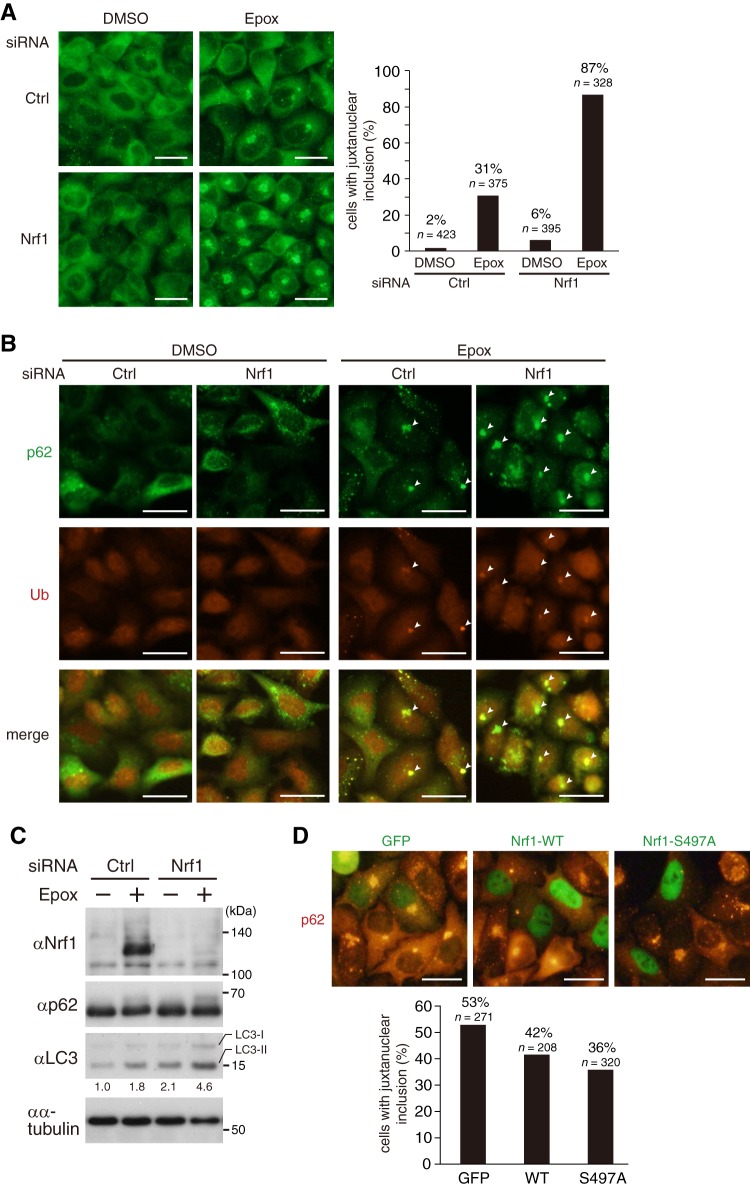Fig 6.
Nrf1 has the ability to ameliorate the formation of p62-positive inclusion bodies in HeLa cells. (A) Knockdown of Nrf1 causes enhanced formation of p62-positive inclusion bodies. HeLa cells transfected with control (Ctrl) or Nrf1 siRNA were treated with DMSO or 10 nM epoxomicin for 24 h. The cells were immunostained with anti-p62 antibody, and the percentage of cells containing juxtanuclear inclusion bodies were calculated. Bars, 50 μm. (B) p62-positive inclusion bodies formed by proteasome inhibition are ubiquitin positive. HeLa cells transfected with control (Ctrl) or Nrf1 siRNA were treated with DMSO or 10 nM epoxomicin for 24 h. The cells were immunostained with anti-p62 (green) and antiubiquitin (red) antibodies. Juxtanuclear inclusion bodies stained with both antibodies are indicated by small white arrowheads. Bars, 50 μm. (C) The cells treated as in panel A were lysed and subjected to immunoblot analysis with the indicated antibodies. The relative band intensities of LC3-II were quantified and normalized to α-tubulin values. (D) The S497A mutant has a greater ability to decrease the formation of p62-positive juxtanuclear inclusion bodies than wild-type Nrf1. HeLa cells transfected with the expression plasmid for GFP or wild-type or the S497A mutant of 3×Flag Nrf1 were treated with DMSO or 10 nM epoxomicin for 24 h. The cells were immunostained with anti-Flag and anti-p62 antibodies, and the percentage of cells containing juxtanuclear inclusion bodies out of total GFP- or 3×Flag Nrf1-expressing cells were calculated. Bars, 50 μm.

